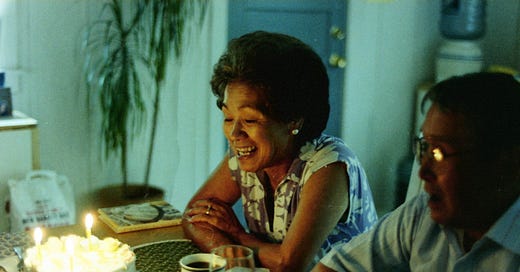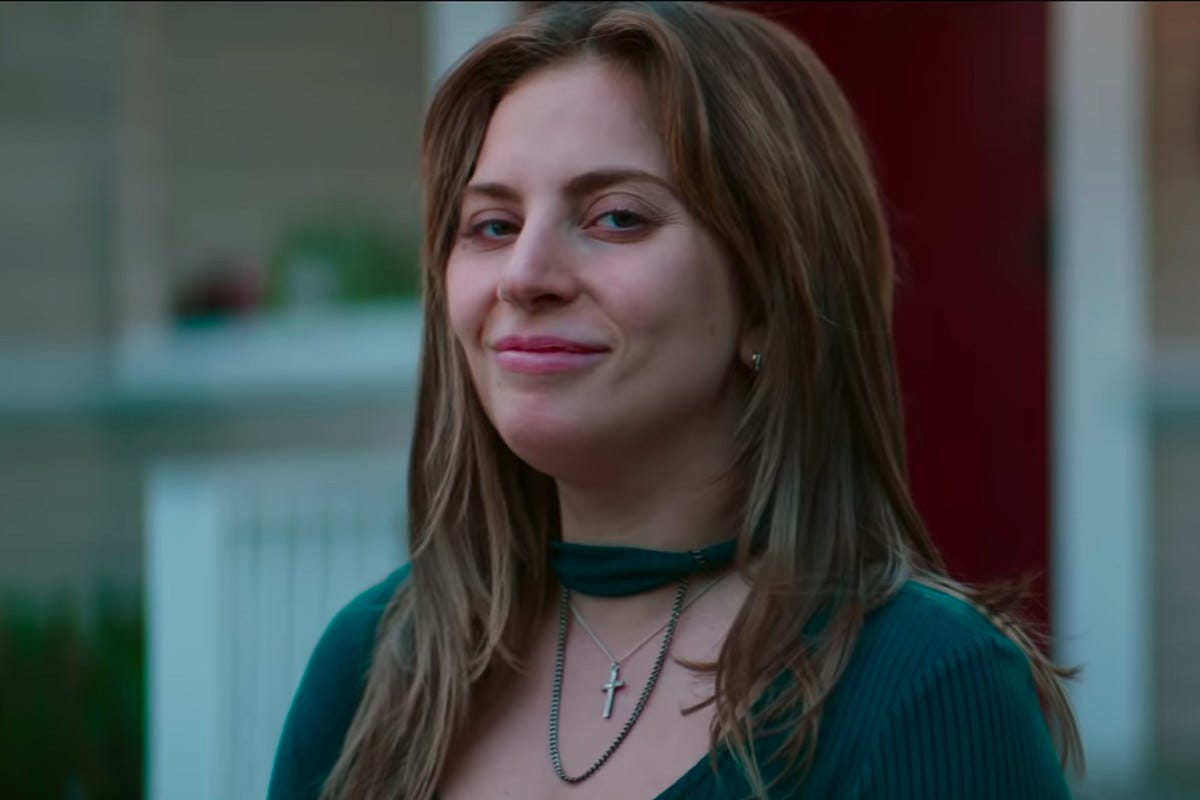I swear I’m going somewhere with this
I’ve never claimed to be a Little Monster. However, there is one specific way in which I deeply relate to famously un-relatable queen Lady Gaga. There’s a scene in her deranged quasi-cinéma vérité documentary, Gaga: Five Foot Two, that interrupted what was, until that point, a mere exercise in envy-revulsion voyeurism.
Gaga’s fifth studio album, Joanne, is an elegy to an aunt who died long before they could meet. But to Gaga, her presence looms large. Her family perpetually mourned Joanne after her death at 19 from complications related to lupus. She explains this to New York Times contributor Darryl Pinckney and it is at this point in the film that a compelling narrative thread emerges.
We watch as she plays a studio edit of the single “Joanne” for Pinckney, shoulders hunched. She explains that Joanne was an artist who preferred death when faced with the option to amputate her hands to prolong her life. Finally, she states, “I am Joanne.”
She’s clearly going through something that isn’t well understood by the people with whom she’s interacting. For his part, Pinckney — while kind and sympathetic — visibly doesn’t get it. Or he gets an edit that suggests he doesn’t. But his NYT Style Mag profile dedicates fully one sentence to the matter, so…
Ambiguous loss
A name for what Gaga may be experiencing is ambiguous loss, a concept engineered by Dr. Pauline Boss. It describes a rupture in the grieving process resulting from a disorienting simultaneity of presence and absence. Someone can be physically present and psychologically absent, as in cases of advanced neurological decline, or psychologically present and physically absent. This applies to instances of abduction, missing bodies during natural disasters, and, in this case, a long-dead relative with a powerful influence over their survivors.
Ambiguous loss freezes or disrupts the grieving process, which is itself a-linear and chaotic. It’s confusing to the person experiencing it and to those, like Pinckney, who witness it.
Even her family doesn’t seem to fully comprehend her grief and its manifestations. The film’s next scenes depict a visit to her grandmother, the mother of Joanne. These moments are the ones that jolted me with an eerie feeling of familiarity.
Gaga warmly greets her grandmother, her father in tow, and exchanges pleasantries before looking through heirlooms of Joanne’s. The time comes for Gaga to play the track. In a manner that is, dare I say, trauma-informed, she prompts her grandmother that the content of the song may trigger grief or upset and that she is available for emotional support if needed.
“Honey, it’s been a long time… It’s been over 40 years.”
“I know, I just want to be sensitive.”
While the song plays, Gaga’s grandmother is noticeably grief-stricken. Her father leaves the room. The camera pans to a large portrait of Joanne that hangs prominently in her home. As it concludes they speak again, thick with emotion. A warning that I’m going to subject this interaction to extreme scrutiny, which may be distasteful to some readers.
“It’s beautiful… You’re just so special. Anyway…”
“Thanks for listening. I love you. Did I get it right?”
“Yes, you did… Good one.”
And, soon after:
“Don’t become maudlin over all this. It’s a long time. And for the 19 years that we had her, she was precious, and she’s not been forgotten, ever. Okay?”
Far be it from me to suggest that Gaga’s family doesn’t broadly understand her grief for Joanne. I do think, however, that the intensity with which Gaga mourns an aunt she never met confuses them. Relative to their experience, Gaga’s grief is inarguably of a different category (which is not to say it is of a different degree). Perhaps it intrudes upon their own grieving processes to be reminded of their loss. Further still, I wonder if they think that Gaga doesn’t have the right to feel so impassioned in her mourning when they themselves knew Joanne so intimately and felt her loss so acutely.
Parasocial social club
In the matter (at least as it exists in my imagination) of the dissonance between Gaga and her family’s grief processes, I feel a strong identification with Gaga. I sense (or at least project) a feeling of disappointment in the reception of her song. I feel (or, again, project) a suspicion that Gaga leaves dissatisfied by the emotional differential.
In her place I would have craved the opportunity for shared catharsis, for bigger and deeper emotional effusion. What she receives instead is (to be uncharitable) some soft-core gaslighting about not being too sad about the loss of a figure of dramatic psychological importance to Gaga and the suggestion that to mourn now isn’t quite sensical, as it’s been four decades since Joanne’s death.
AND YET.
There seems to be the suggestion of a well of emotion that is perhaps too painful to access. There’s that big portrait of Joanne that must be visited daily given its position. And let’s not forget that they fucking NAMED her Stefani Joanne Angelina Germanotta. Whomst amongst us wouldn’t feel the urge to over-identify in such conditions, to crave more information about her; perhaps even to feel incomplete without it.
At least in name, it turns out Gaga actually is Joanne. Her relatives, with the benefit of decades to grieve and process, probably want to insulate Gaga from the pain of loss. And it is the well-meaning but ultimate invalidation of it all, as a person who also feels the weight of ambiguous familial loss, which rankles me to my core and makes me entertain the notion of becoming a Gaga simp.
< Insert tonal shift >
Just before sitting down to write this essay, I was poring through the National Archives Database of Japanese American concentration camp populations. At the slightest provocation I become obsessed with searching for more information about my family history, and each time it triggers me, depresses me, and exhausts me. But I’m compelled beyond rationality to keep looking.
This time, even the descriptor on the National Archives needles me.
“This series contains personal descriptive data about Japanese Americans evacuated from the states of Washington, Oregon, and California to ten relocation centers operated by the War Relocation Authority during World War II in the states of California (Tule Lake and Manzanar Centers), Idaho (Minidoka Center), Utah (Central Utah Center), Colorado (Granada Center), Arizona (Colorado River and Gila River Centers), Wyoming (Heart Mountain Center), and Arkansas (Rohwer and Jerome Centers).”
Evacuation is a euphemism I haven’t heard before. Looking through records, I notice it misspells the name of my great-grandfather, and mistakes my grandfather’s middle name for his first name. But it also fills in gaps. It tells me my great-grandmother, Fumiko, emigrated from Japan to the US in her twenties, couldn’t speak English, and was a seamstress. It reminds me that my great-grandfather Teiichi was born in 1902 in Kauai. I learn the names of my grandmother’s parents for the first time: Akiyo and Kazuma. I imagine my grandmother as a nine-year-old being forced into incarceration, having surrendered nearly all of her worldly possessions.
This crater in my family narrative causes me so much grief. I don’t know who these people are, what they look like, what their stories are. Any material evidence of their pre-concentration camp existence was erased. I live in the shadow of two generations of lived and inherited trauma. And I have to learn about it from a violently impersonal and virtually unnavigable government database.
While learning more about the camps is painful, it also thins the ambiguity which keeps me static in my grief. Better the devil you know, as the saying goes. I search for these crumbs, settling for minor and intermittent breakthroughs, because the pain that my family feels around these events frightens me. Its persistent immediacy, commonly felt in instances of trauma, makes emotional emotional closure feel impossible.
The experience of boundary-less mourning not just for an absent person, but for your unrealized relationship with them, is what I feel I share with Gaga (and very likely the only thing, but nonetheless). Insofar as it’s possible to understand the psychological state of a person I’ve never met, I feel I recognize the misunderstood longing, the ardent desire for communion, the perpetually sublimating grief.
I guess,
despite my best intentions,
I simply have no choice but to stan.
PS
There’s no recipe this week; just an essay. This is the beginning of a shift in my posting schedule (which, honestly, was already on its way out). Moving forward, I’ll be posting food-related content on Wednesdays and a longer-form essay kind of thing on Sundays. TWICE the Stew! In a format that suits me better and, hopefully, the form of this newsletter as a whole! See you then!!





